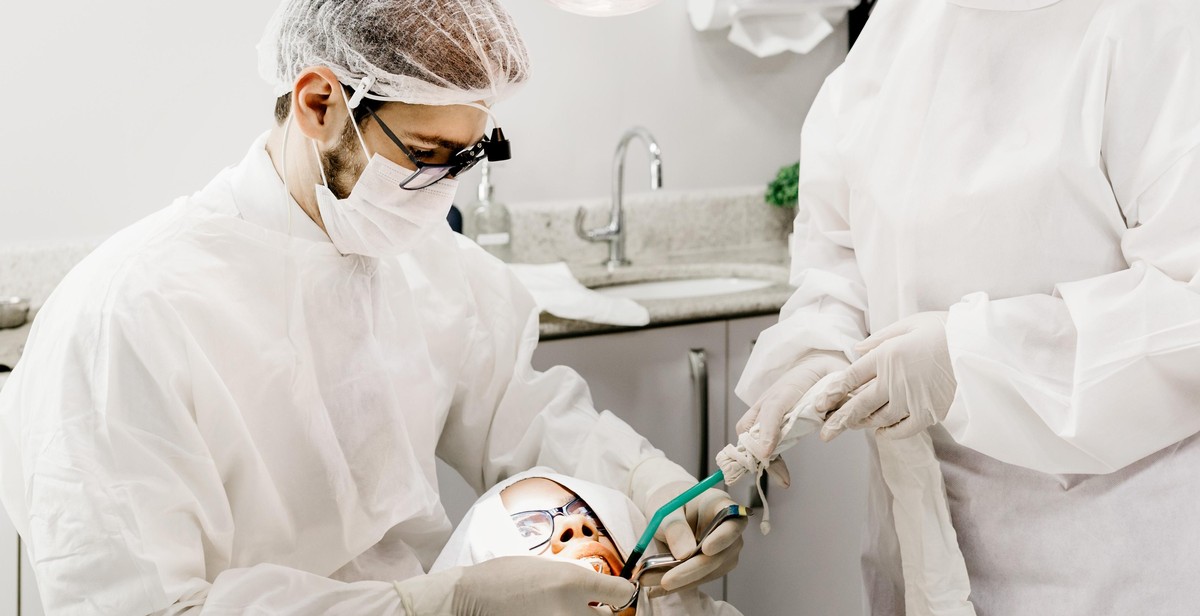How to Enhance Hospital Workflow: Streamlining Processes and Communication
Running a hospital is no easy task. With numerous departments, staff members, and patients to manage, it can be challenging to keep everything organized and running smoothly. However, by streamlining processes and communication, hospitals can enhance their workflow, leading to improved patient care and more efficient operations.
The Benefits of Streamlining Hospital Workflow
By streamlining hospital workflow, hospitals can:
- Reduce wait times for patients
- Increase patient satisfaction
- Improve staff efficiency
- Reduce errors and improve patient safety
- Save time and money
How to Streamline Hospital Workflow
There are several steps hospitals can take to streamline their workflow:
- Assess current processes and identify areas for improvement
- Standardize processes and procedures
- Implement technology to automate tasks and improve communication
- Provide staff training and education
- Encourage collaboration and teamwork
Conclusion
By streamlining processes and communication, hospitals can enhance their workflow, leading to improved patient care and more efficient operations. By assessing current processes, standardizing procedures, implementing technology, providing staff training, and encouraging collaboration, hospitals can reap the benefits of a streamlined workflow.

The Importance of Streamlining Hospital Workflow
As a healthcare professional with over 10 years of experience, I have seen firsthand the importance of streamlining hospital workflow. The healthcare industry is fast-paced and ever-changing, and it is crucial to ensure that all processes and communication channels are optimized to provide the best possible patient care.
Improved Efficiency and Patient Care
Streamlining hospital workflow can improve efficiency and reduce wait times for patients. By optimizing processes such as patient registration, triage, and discharge, hospitals can ensure that patients receive timely and effective care. In addition, streamlining communication channels between healthcare professionals can reduce errors and improve patient outcomes.
Cost Savings
Streamlining hospital workflow can also result in cost savings for hospitals. By reducing wait times and optimizing processes, hospitals can improve patient flow and reduce the need for additional staff. In addition, streamlining communication channels can reduce errors and improve patient outcomes, which can lead to lower readmission rates and overall healthcare costs.
Improved Staff Satisfaction
Streamlining hospital workflow can also improve staff satisfaction. By optimizing processes and communication channels, healthcare professionals can spend more time providing patient care and less time on administrative tasks. In addition, clear and efficient communication can reduce stress and improve job satisfaction for healthcare professionals.
Conclusion
Overall, streamlining hospital workflow is crucial for improving efficiency, reducing costs, and providing the best possible patient care. As a healthcare professional, I have seen firsthand the benefits of optimizing processes and communication channels, and I strongly encourage hospitals to prioritize streamlining their workflow.

Identifying Inefficiencies in Hospital Workflow
One of the most significant challenges in enhancing hospital workflow is identifying inefficiencies. It can be challenging to pinpoint where bottlenecks occur, especially in large healthcare facilities. However, by leveraging data and analytics, healthcare providers can identify areas for improvement and streamline processes.
Using Data to Identify Bottlenecks
Electronic health records (EHRs) can provide valuable insights into hospital workflow. By analyzing data from EHRs, healthcare providers can identify areas where processes are slowing down and causing delays.
One common bottleneck in hospital workflow is patient wait times. By analyzing data from EHRs, healthcare providers can identify which departments or services are causing the longest wait times. For example, if patients are waiting a long time for lab results, it may be necessary to streamline the lab process or hire additional staff to handle the workload.
Another common bottleneck is communication breakdowns between healthcare providers. By analyzing data from EHRs, healthcare providers can identify which departments or services are experiencing the most communication breakdowns. For example, if nurses are frequently calling physicians for clarification on orders, it may be necessary to improve the order entry process or provide additional training for nurses.
Other Tools for Identifying Inefficiencies
In addition to EHRs, there are other tools healthcare providers can use to identify inefficiencies in hospital workflow. For example, Lean Six Sigma methodologies can be used to identify and eliminate waste in hospital processes. Time and motion studies can also be used to identify areas where processes can be streamlined.
Ultimately, identifying inefficiencies in hospital workflow requires a data-driven approach. By analyzing data and leveraging tools like Lean Six Sigma methodologies, healthcare providers can streamline processes and improve patient care.

Streamlining Communication in Hospitals
One of the most crucial aspects of enhancing hospital workflow is streamlining communication. When communication is clear, concise, and efficient, it can improve patient outcomes, reduce medical errors, and increase staff satisfaction. Implementing a communication system can help achieve these goals.
Implementing a Communication System
Implementing a communication system can make a significant difference in hospital workflow. A communication system can help ensure that all staff members are on the same page, and information is shared quickly and accurately. There are several types of communication systems that hospitals can use, including:
- Electronic health record (EHR) systems
- Patient portals
- Messaging platforms
- Automated alerts and reminders
These systems can improve communication between staff members, patients, and their families. They can also help reduce the time spent on administrative tasks, allowing staff to focus more on patient care.
The Importance of Empathy in Communication
While implementing a communication system is essential, it’s also crucial to remember the importance of empathy in communication. Empathy is the ability to understand and share the feelings of another person. In a hospital setting, empathy can help build trust and rapport with patients and their families.
When communicating with patients and their families, it’s essential to listen actively and respond with empathy. This means taking the time to understand their concerns, fears, and needs. It also means being honest and transparent about their medical condition and treatment options.
Empathy can also help improve communication between staff members. When staff members feel heard and understood, they are more likely to work collaboratively and efficiently.
| Benefits of Streamlining Communication in Hospitals |
|---|
| Improved patient outcomes |
| Reduced medical errors |
| Increased staff satisfaction |
| Reduced administrative tasks |
| Improved collaboration between staff members |
Overall, streamlining communication in hospitals can have a significant impact on patient care and staff satisfaction. By implementing a communication system and practicing empathy in communication, hospitals can improve workflow and provide better care for their patients.

Streamlining Processes in Hospitals
As a seasoned healthcare professional, I have seen firsthand how streamlining processes in hospitals can significantly improve workflow and patient outcomes. Two key approaches that have proven effective are standardization and the use of technology.
The Benefits of Standardization
Standardizing processes across different departments and units within a hospital can help reduce errors, improve efficiency, and enhance patient safety. By establishing clear protocols and procedures, healthcare providers can ensure that everyone is on the same page and following best practices.
For example, standardizing the process for administering medication can help prevent medication errors and adverse drug reactions. Similarly, establishing a standardized process for patient handoffs between shifts can help ensure that critical information is communicated effectively and that there are no gaps in care.
Standardization can also help healthcare providers identify areas for improvement and optimize workflows. By tracking metrics such as length of stay, readmission rates, and patient satisfaction, hospitals can identify areas where processes can be streamlined and outcomes can be improved.
Using Technology to Streamline Processes
Technology can be a powerful tool for streamlining processes in hospitals, from electronic medical records (EMRs) to automated medication dispensing systems. By automating routine tasks and eliminating manual processes, healthcare providers can free up time to focus on patient care and improve efficiency.
For example, EMRs can help healthcare providers access patient information more quickly and accurately, reducing the risk of errors and improving communication between different departments. Automated medication dispensing systems can help prevent medication errors and ensure that patients receive the right medication at the right time.
Technology can also help hospitals track metrics and identify areas for improvement. For example, patient flow software can help hospitals optimize bed management and reduce wait times, while predictive analytics can help hospitals identify patients who are at risk for readmission and intervene before complications arise.
- Standardizing processes and using technology can:
- Reduce errors and improve patient safety
- Improve efficiency and workflow
- Free up time for healthcare providers to focus on patient care
- Identify areas for improvement and optimize workflows
| Approach | Benefits |
|---|---|
| Standardization | Reduced errors, improved efficiency, enhanced patient safety |
| Technology | Automated processes, improved communication, better data tracking and analysis |

Conclusion
Streamlining processes and communication is crucial to enhancing hospital workflow. The healthcare industry is constantly evolving, and hospitals need to keep up with the changes to improve patient care and outcomes. By implementing the strategies discussed in this article, hospitals can reduce errors, improve efficiency, and enhance the overall quality of care.
Key Takeaways
- Identify areas of inefficiency and waste in hospital processes
- Implement communication protocols to ensure all staff members are on the same page
- Invest in technology to automate repetitive tasks and streamline workflows
- Provide ongoing training and education to staff members to keep them up-to-date with the latest industry trends and best practices
Benefits of Enhancing Hospital Workflow
By enhancing hospital workflow, hospitals can:
- Reduce medical errors
- Improve patient outcomes
- Increase staff satisfaction and productivity
- Reduce costs and waste
